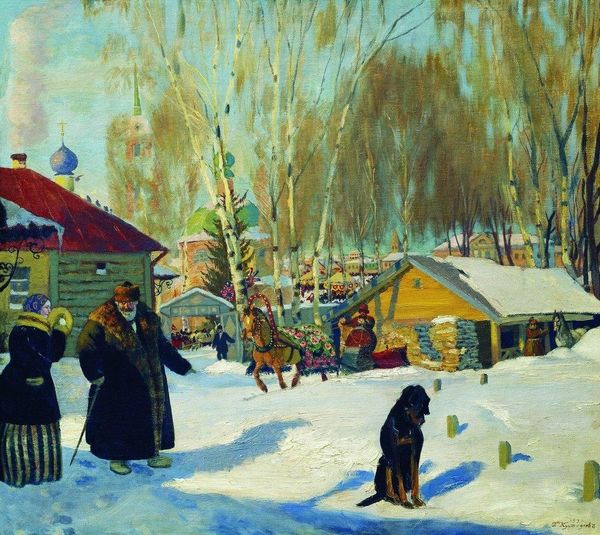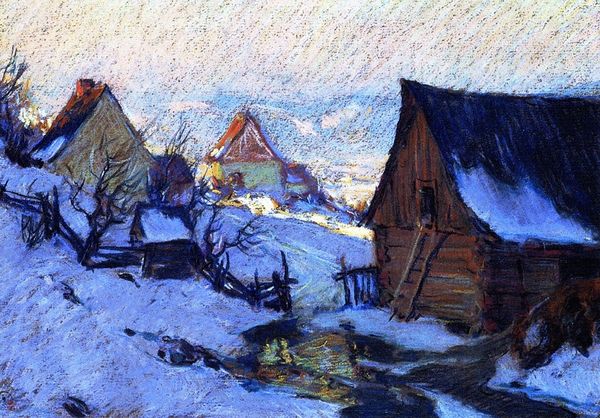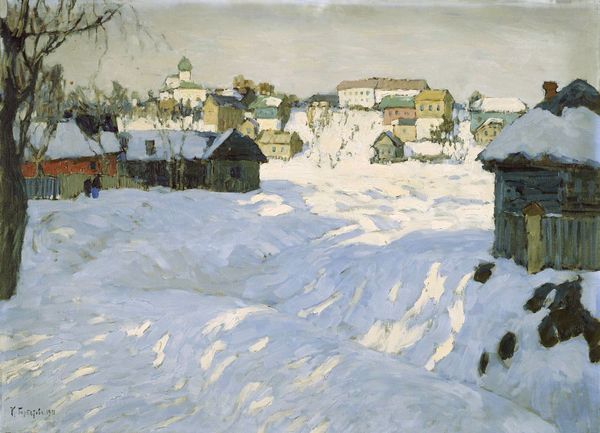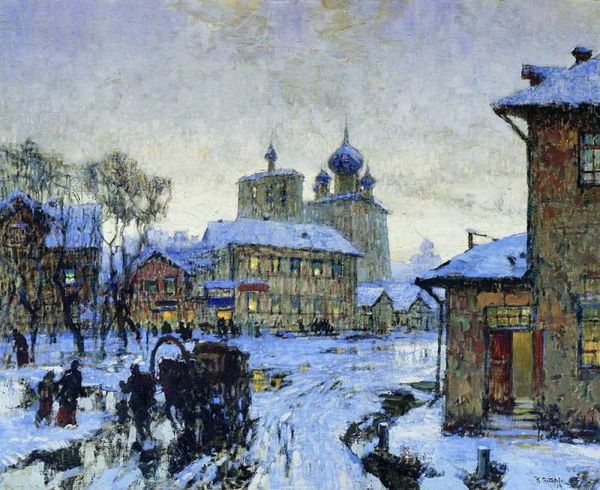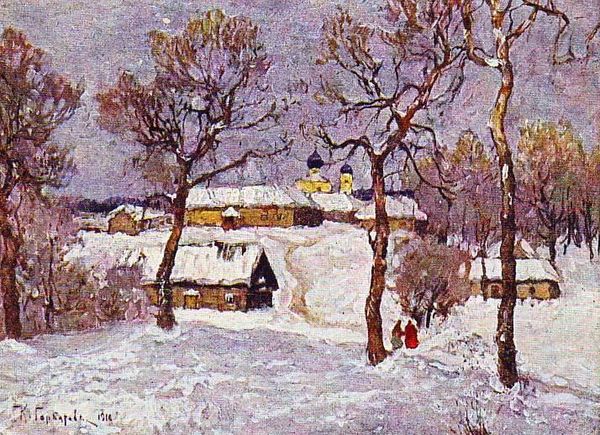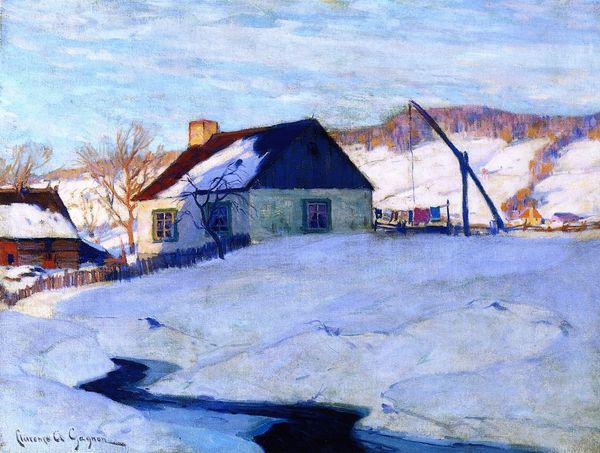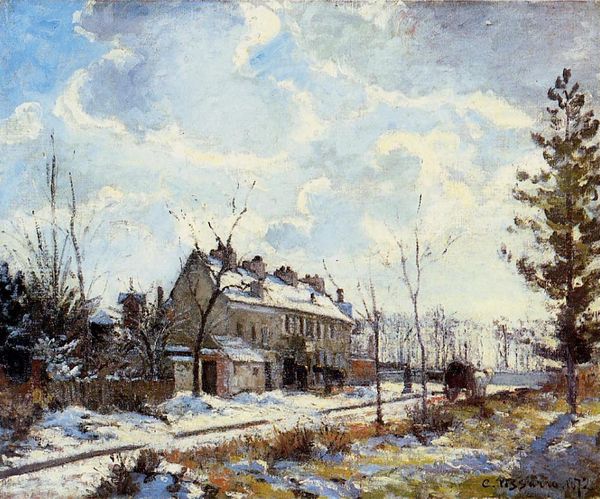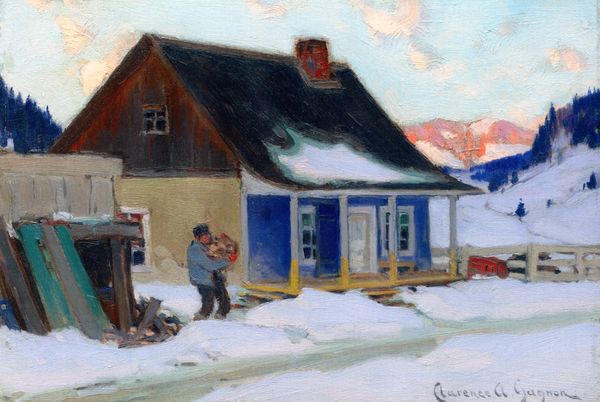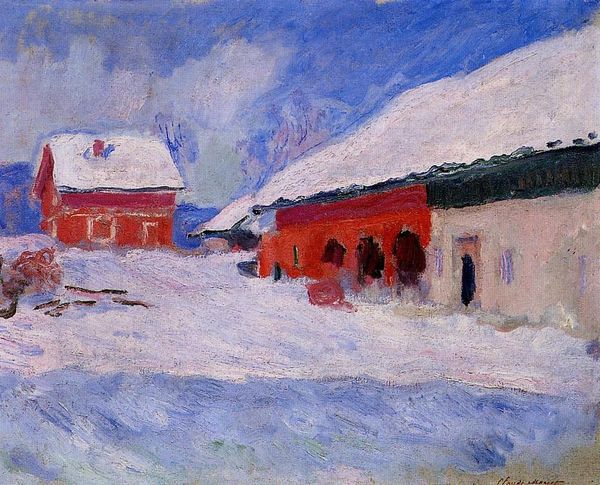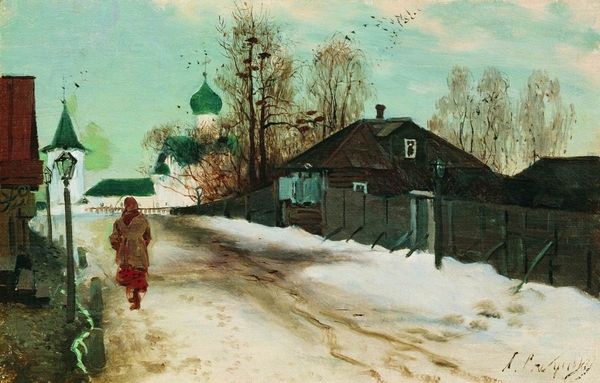
Copyright: Public domain
Curator: This is Konstantin Gorbatov's "A Street in Winter," painted in 1921. It offers a window into a specific moment in time, reflecting the artist’s sociocultural surroundings and, potentially, the everyday lives of ordinary people during the period following the Russian Revolution. Editor: It certainly has a tranquil feel. The muted palette, predominantly whites and blues, lends a somber, almost melancholic mood. And those long blue shadows! The composition relies so much on that stark contrast. Curator: Yes, the heavy impasto and visible brushstrokes invite discussion about the stylistic context. Gorbatov was part of the Russian avant-garde movement, which encompassed diverse artistic approaches. One can clearly observe here elements related to Impressionism as it reflects on the play of light across surfaces. Yet the work feels distinctly Russian. Consider, for example, the architecture; these structures tell stories about social stratification and daily living conditions. Editor: The paint application is quite interesting—thick and expressive. See how Gorbatov uses these brushstrokes to create texture and depth in the snow? I find it really pushes beyond a simple depiction of snow; it becomes a study of texture and luminosity itself. Curator: Absolutely. One could explore this artwork in terms of how it captures lived experiences during the reconstruction period following war and revolution. Think about resource scarcity and the changing role of community as a space of both resilience and survival, but also consider emigration. In 1922 Gorbatov left Russia, never to return. Editor: A stark visual articulation of color temperature. He uses subtle shifts in hues to differentiate between surfaces and shadow. I appreciate the harmony achieved through those limited chromatic ranges. Curator: Perhaps it captures some essence of Russia that he wanted to hold onto. It's a reminder that art is not created in a vacuum but deeply entangled with broader historical, social, and political forces, and offers us a glimpse of resistance during the complexities of transition. Editor: For me, the true essence lies within the skillful manipulation of tone and texture. This analysis provides valuable insights.
Comments
No comments
Be the first to comment and join the conversation on the ultimate creative platform.


